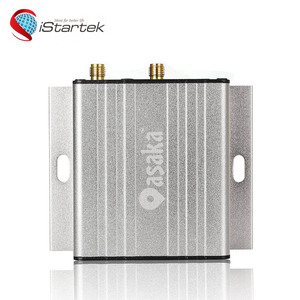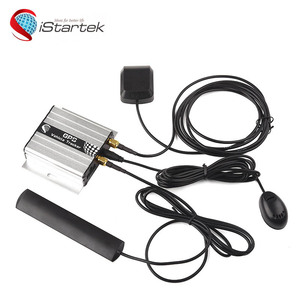(10 products available)
































































An AVL vehicle tracking system is a sophisticated technology-based solution designed for tracking vehicles in real time. This system utilizes different GPS technologies to provide the tracking service. The AVL vehicle tracking system can be divided into several types:
Regular Software Updates
Monitoring and performing software updates as they come out are essential for keeping the AVL vehicle tracking system operating at its best. Updates enhance performance, fix bugs, and improve security. Auto-updates should be enabled if available. Manual updates should be checked often using the tracking system's settings. Any required updates should be installed right away. This prevents vulnerabilities and maintains compatibility with other tech.
Regular Hardware Inspection
Regular hardware inspection involves routinely checking the tracking devices installed in vehicles for any damage or wear. Connections, casings, and other parts are examined. Issues like loose cables or cracks could cause tracking errors if left unattended. The GPS antenna should also be positioned properly. Poor placement could block signals. Inspections ensure all tracking components function reliably.
Communication Network Maintenance
Communication network maintenance involves ensuring the tracking system can transmit data reliably. AVL systems rely on mobile networks or satellite links. Coverage areas are monitored for signal issues that could disrupt tracking. Network providers are contacted if problems are suspected. The bandwidth used for tracking should also be adequate. Heavy traffic could cause delays in data transmission. Scheduled maintenance checks the system's communication runs smoothly.
Power Supply Management
Power supply management involves monitoring the tracking device's power levels. Devices with low batteries could stop tracking accurately. Scheduled maintenance includes checking battery health and replacing them per the manufacturer's recommendations. Backup power sources, like extra batteries, are also maintained. This ensures tracking continues even during unexpected power outages.
Data Accuracy Verification
Data accuracy verification is a scheduled maintenance task that involves checking the tracking data for any anomalies or errors. The reported location and travel details are compared against actual observations. Discrepancies could indicate a tracking problem that needs troubleshooting. The tracking software's accuracy of features like geofencing is also tested. This ensures all functions provide reliable data.
Security Protocols
Security protocols involve ensuring the tracking system is protected from possible cyberattacks. Sensitive data, like vehicle locations, must remain private. Tasks include checking user access controls and encrypting transmitted data. The system is scanned for vulnerabilities per best practices. Scheduled maintenance also includes monitoring the tracking system for any security threats. Immediate action is taken to address any breaches that are discovered.
Choosing the right AVL vehicle tracking system for business can be daunting, but with these tips, it will be an easy task. First, consider these factors:
Business Needs
Business needs are the first factors to consider when choosing an AVL tracking system. What tracking features are needed for the business? Tracking features like real-time tracking, geofencing, or route optimization should be considered. Also, consider the number of vehicles to be tracked and if the system will allow for future expansion.
Ease of Use
When choosing an AVL tracking system, consider the ease of use. The system should have a user-friendly interface with easy access to tracking data. Also, consider if the tracking system has mobile access for tracking on the go.
Installation and Maintenance
Consider installation and maintenance when choosing an AVL tracking system. The AVL tracking system should have easy installation and low maintenance requirements. Also, consider if the tracking system requires professional installation or if it can be installed yourself.
Cost
Cost is the major factor to consider when choosing an AVL tracking system. Set a budget for the tracking system and consider the features that fall within the budget. Don't forget to consider the long-term costs, such as monthly subscriptions or maintenance fees.
Customer Support
Customer support is an important factor to consider when choosing an AVL tracking system. Choose a tracking system with excellent customer support to help with installation, maintenance, and troubleshooting.
Installing and replacing AVL tracking systems can be a complex process that requires knowledge of both hardware and software components. Below are the general steps for installing or replacing an AVL tracking system:
1. Preparation
The first step is to read the installation manual. Select the installation method that suits the system being installed. Prepare the vehicles that are going to be tracked. This involves cleaning and assessing the vehicles.
2. Hardware Installation
The next step is to install the tracking device on the vehicle. Choose a suitable location on the vehicle where the tracking device will be installed. The location should be discreet to avoid tampering with the device. Mount the device and ensure it is firm. Connect the device to the vehicle's power supply. In some cases, the tracking device may have to be connected to the vehicle's diagnostic port. After that, install any other necessary hardware components like antennas.
3. Software Installation
Install the software that controls the tracking system on a computer. This software is responsible for tracking and managing the data received from the tracking devices. After that, configure the software according to the system requirements. Set up user accounts, permissions, and other necessary parameters. Connect the tracking device to the software. This establishes communication between the tracking device and the software. The tracking device will send data to the software, allowing tracking and monitoring.
4. System Configuration
At this point, the system will be configured to meet the users' requirements. Define the tracking parameters, such as reporting intervals, geofences, and alerts. These parameters control how the system operates and what events trigger notifications. Configure the communication settings to specify how the tracking device communicates with the software. This includes setting up the data transmission method (e.g., GPRS, SMS) and the communication protocol.
5. Testing and Validation
The installed system will be tested to ensure it is functioning properly. Perform a test installation on a test vehicle before installing the tracking system on operational vehicles. This helps verify the functionality of the tracking device and the communication between the software and the device. After that, install the tracking system on operational vehicles. Once the tracking system is installed on operational vehicles, perform a system validation to ensure that all vehicles are tracked correctly and the data is transmitted to the software.
6. User Training and Documentation
At this point, users who will operate the tracking system will be trained. They will be trained on using the software and the system's functionalities. Provide documentation with the installation, configuration, and operation procedures for the AVL tracking system. This documentation serves as a reference for future maintenance and support.
7. Maintenance and Support
The last step involves establishing a maintenance and support plan for the AVL tracking system. Regularly check the system to ensure it is functioning properly. Monitor the data received from the tracking devices and track vehicle performance. Keep the system updated by installing software updates and upgrading hardware components when needed. Provide technical support for system users and resolve any issues that may arise.
Q: Is the AVL vehicle tracking system legal?
A: Yes, the AVL vehicle tracking system is legal. However, there are regulations that govern its use to ensure privacy is respected. The regulations may vary depending on the region.
Q: Can the AVL vehicle tracking system be installed in any vehicle?
A: The AVL vehicle tracking system can be installed in most vehicles, including cars, trucks, and motorcycles. However, the suitability may depend on the specific tracking device or system being used.
Q: Does the AVL vehicle tracking system work in remote areas?
A: The functionality of the AVL tracking system in remote areas depends on the type of tracking technology used. For instance, devices using GSM may have limited coverage in remote areas, while those using GPS have global coverage.
Q: Can the AVL vehicle tracking system be used for tracking stolen vehicles?
A: Yes, the AVL vehicle tracking system can be used to track stolen vehicles. It allows real-time tracking and location information, which can assist authorities in recovering the vehicle.
Q: Is the AVL vehicle tracking system expensive to maintain?
A: The maintenance costs of the AVL vehicle tracking system can vary depending on the type of system, the service provider, and the features involved. Some systems may require a monthly subscription fee, while others have a one-time payment requirement.